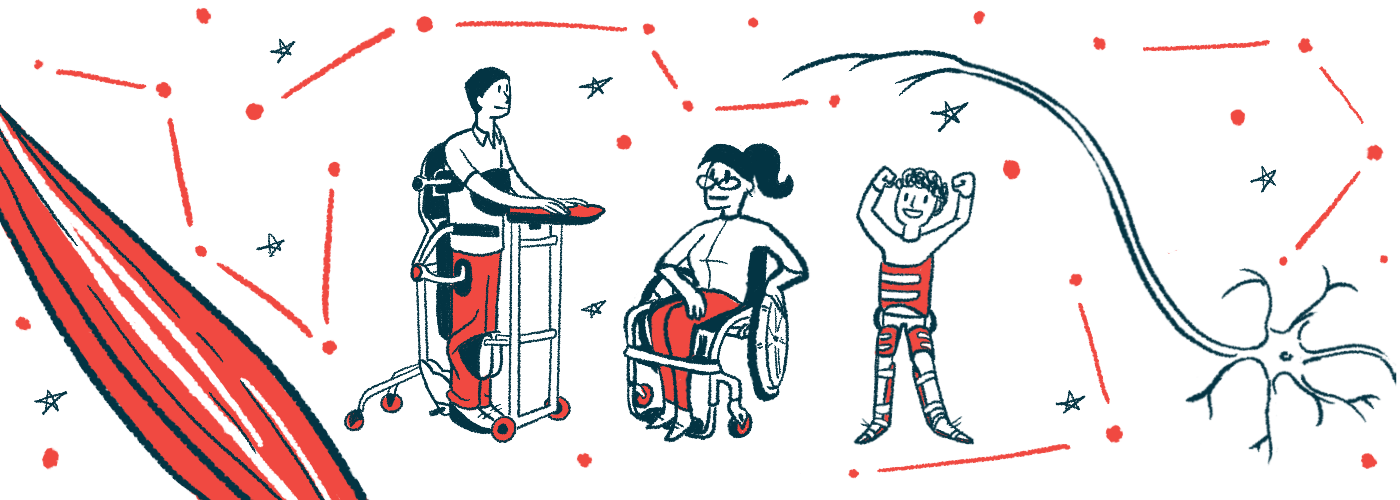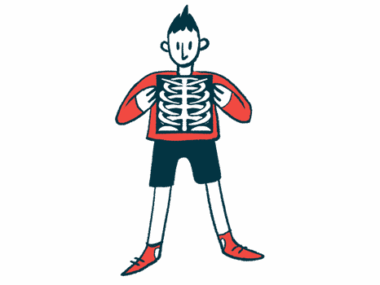Early DMTs may slow scoliosis progression in SMA type 2
Researchers studied 77 patients who had at least one X-ray of the spine
Written by |

Disease-modifying therapies (DMTs) may slow the progression of an abnormal curvature of the spine in people with spinal muscular atrophy (SMA) type 2, a study reported.
For those patients treated early, especially ones with no or minimal scoliosis, these findings were particularly significant, according to “Early treatment of type II SMA slows rate of progression of scoliosis,” which was published in the Journal of Neurology, Neurosurgery and Psychiatry.
SMA is characterized by progressive muscle weakness and atrophy (wasting), particularly around the spine, but it can affect other parts of the body.
Muscular atrophy around the spine can lead to scoliosis, when the spinal column bends sideways, often into a S-shape. Most SMA patients will develop scoliosis, especially those with SMA type 1 and type 2, the more severe forms of the disorder. Surgery to correct scoliosis is often required to improve mobility and breathing.
Although DMTs for SMA can slow the disease’s progression and improve motor function, little is known about their action on scoliosis.
Scoliosis progression, with and without treatment
“No systematic study has so far investigated the possible impact of the existing drugs on the progression of scoliosis assessing whether the treatment may at least delay scoliosis progression when compared with untreated patients,” wrote the researchers, who examined 77 people with SMA type 2, with a mean age of 5.67 at the study’s start who had at least one X-ray of the spine and a follow-up of more than 1.5 years. The mean follow-up period was 4.61 years, while the mean age at the last examination was 10.3.
Among them, 39 were treated with DMTs — 30 (77%) were receiving Spinraza (nusinersen) and nine (23%) were being treated with Evrysdi (risdiplam). The remaining 38 had yet to receive treatment by the start of the study, or baseline. No significant differences in baseline characteristics between treated and untreated patients were observed.
The Cobb’s angle measured the degree of sideways spinal curvature, with higher values reflecting more severe scoliosis. In addition to measuring the average annual change in the Cobb’s angle, the effect of treatment on the time to reach a 50-degree Cobb’s angle (severe scoliosis) was assessed.
Over follow-up, the mean value for the total Cobb variation was similar between treated and untreated patients (8.4 vs. 9.6 Cobb degrees/year), meaning overall differences in changes in Cobb’s angle over time between both groups weren’t found.
As part of a subgroup analysis, all the participants were divided by treatment status and a sliding cutoff based on age, Cobb’s angle, and motor abilities at the first visit was applied. The optimal choice of significant cutoff value was less than 26 degrees Cobb’s value and less than 4.5 for age. Using this cutoff, there were 24 treated and 30 untreated patients.
“These values independently emerge as significant predictors for scoliosis progression in SMA type II patients when comparing the outcomes between treated and untreated groups,” the researchers noted. “We found that Cobb angles and age consistently demonstrate the ability to effectively differentiate disease progression between treated and untreated patients while [motor symptom] scores do not.”
Of the participants selected based on these cutoff values, the mean value for the total Cobb’s variation over follow-up was significantly lower for treated versus untreated patients (5.61 vs. 10.05 Cobb degrees/year). This indicated that “pharmacological treatment may slow the progression of scoliosis in the resampled SMA type II cohort,” the researchers wrote.
Similar results were seen when only the age cutoff of less than 4.5 years was applied (4.16 vs. 8.47 Cobb degrees/year) or a Cobb’s angle cutoff of less than 26 degrees was used (5.44 vs. 9.61 Cobb degrees/year).
Patients who received treatment were 54% less likely to reach a 50-degree Cobb angle than those who didn’t, a statistical analysis showed, but the result wasn’t significant. Similar results occurred when only the Cobb’s angle cutoff was applied.
Significance of treating younger patients
When only the age cutoff was applied, however, the treatment effect was significant, showing patients who received treatment were 81% less likely to reach a 50-degree Cobb’s angle than those without treatment.
“These results indicate that while in the overall cohort treatment may not produce a marked response on scoliosis, when initiated in younger infants, especially in those with no sign or minimal scoliosis the progression of scoliosis may be slower,” the researchers said.
The medium age at the last follow-up among those who didn’t reach a 50-degree Cobb angle was similar (between 6-8) in treated and untreated patients, regardless of cutoff values.
“The findings of this study contribute to a better understanding of scoliosis management in SMA II patients, which is critical for clinicians, patients and caregivers, highlighting the importance of early initiation of treatment to slow the progression of scoliosis,” the researchers said.







